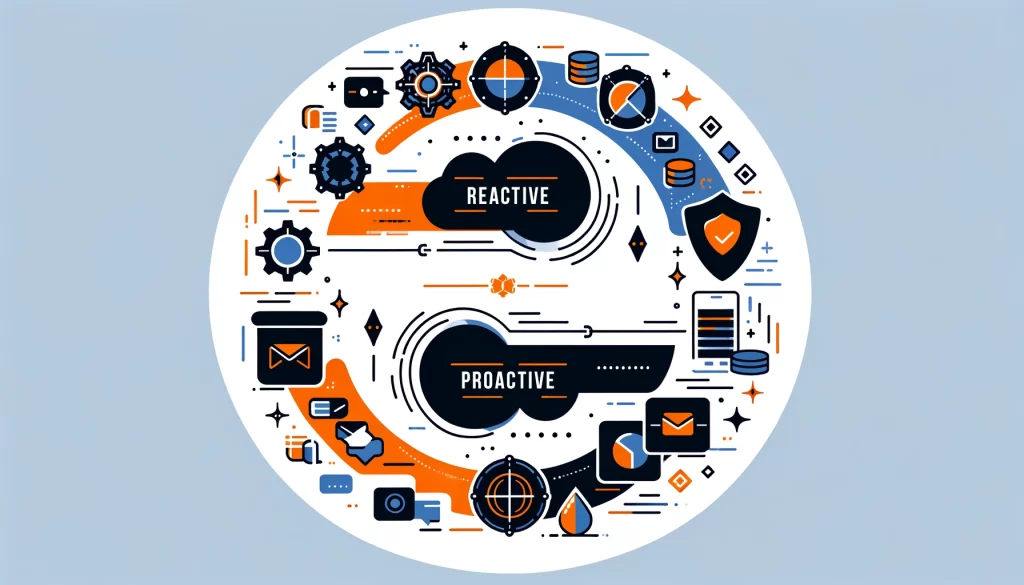
Strengthening Data Protection with Reactive and Proactive Security

Introduction
In today’s digital landscape, data security has become a paramount concern for organizations of all sizes. Knowing the difference between reacting to cyber threats and taking proactive steps to protect data is essential. This article will discuss reactive and proactive data security.
We will explain the main differences between the two approaches and analyze their key features. Additionally, it will introduce Just-In-Time Data Access as a proactive solution. By the end of this article, you will know how to protect your important information.
Understanding Reactive Data Security
Reactive data security is an approach that focuses on responding to security incidents after they have occurred. It involves detecting and mitigating threats once they have already infiltrated your system. Reactive security measures include:
- Incident response plans
- Malware removal tools
- Data recovery solutions
While reactive security is essential, it has its limitations. It often leads to significant downtime, data loss, and financial repercussions. According to a study by IBM, the average cost of a data breach in 2022 was $4.35 million.
The Proactive Data Security Approach
In contrast, proactive data security takes a preventive stance. It involves implementing measures to prevent security incidents from occurring in the first place. Proactive security measures include:
- Regular security assessments
- Employee training and awareness programs
- Implementing strong access controls
- Encrypting sensitive data
By adopting a proactive approach, organizations can significantly reduce the risk of data breaches. According to a study by Ponemon Institute, companies that are proactive about security had 63% fewer data breaches. This was in comparison to companies that took a reactive approach.
Key Differences Between Reactive and Proactive Data Security
Reactive Data Security Proactive Data Security Responds to threats after they occur Prevents threats before they happen Focuses on detection and mitigation Focuses on prevention and risk reduction Often leads to downtime and data loss Minimizes the impact of security incidents Higher long-term costs due to breaches Lower long-term costs through prevention
Features of Reactive and Proactive Data Security
Reactive data security solutions typically offer features such as:
- Intrusion detection systems (IDS)
- Security information and event management (SIEM)
- Incident response tools
On the other hand, proactive data security solutions provide features like:
- Vulnerability scanning and penetration testing
- Data loss prevention (DLP) tools
- Multi-factor authentication (MFA)
- Just-In-Time (JIT) data access
Just-In-Time Data Access: A Proactive Solution
Just-In-Time (JIT) data access is a security method. It gives users access to sensitive data only when necessary. We grant access for a set period.
This minimizes the risk of unauthorized access and data breaches. You can implement JIT access using tools like:
- Dynamic data masking
- Fine-grained access controls
- Time-based access policies
For example, consider a healthcare organization that stores patient records. With JIT access, the system would grant a doctor access to a patient’s record only during their scheduled appointment. Once the appointment concludes, the system automatically revokes access.
Real-World Examples
- Reactive Approach: In 2017, Equifax suffered a massive data breach that compromised the personal information of 147 million individuals. The company’s reactive response included offering free credit monitoring services to affected customers and implementing stronger security measures post-breach.
- Proactive Approach: Google uses a security strategy called “Beyond Corp.” This strategy checks every connection to its systems. Google operates under the assumption that no network is secure. This zero-trust approach has successfully prevented major data breaches at Google.
The DataSunrise Advantage
DataSunrise offers exceptional and flexible tools for data management, including security, audit rules, masking, and compliance. Their proactive security solutions help organizations safeguard sensitive data and maintain regulatory compliance. Some key features of DataSunrise include:
- Database activity monitoring (DAM)
- Data discovery and classification
- Dynamic data masking
- Compliance reporting
If you would like to learn more about how DataSunrise can improve the security of your data, schedule an online demo with our team of experts.
Conclusion
In the battle against cyber threats, organizations must shift from a reactive to a proactive data security mindset. To reduce the risk of data breaches, understand the difference between reactive and proactive methods. Implement strong security measures and make use of tools such as Just-In-Time data access. Investing in proactive security is crucial for safeguarding your data, reputation, and ensuring the continued success of your organization.
